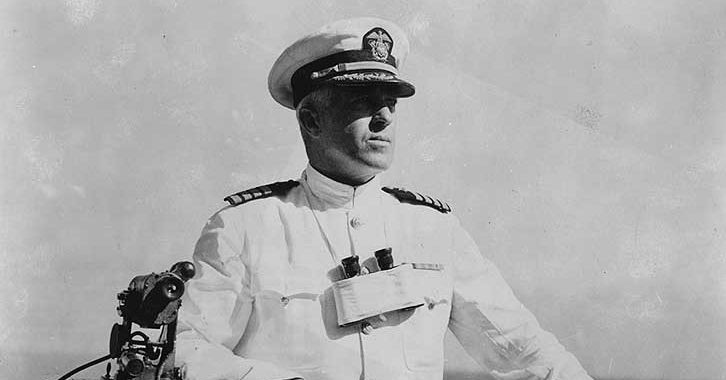

In the early morning hours of Nov. 13, 1942, Vice Adm. William Halsey had a sleepless night. A major Japanese force was steaming towards Henderson Field bent on a massive bombardment.
Halsey had sent two small groups of ships under the overall command of Rear Adm. Daniel Judson Callaghan to stop them.

Callaghan’s force faced long odds. He had two heavy cruisers, three light cruisers (two of which had been optimized for the anti-aircraft role), and eight destroyers. The opposing force had two fast battleships, a light cruiser, and 14 destroyers.
In essence, Halsey knew he had probably sent Callaghan and many of the sailors under him to their deaths.
Only as the seconds turned into minutes, and the minutes turned into hours, one thing was obvious: Henderson Field had not come under attack.
Dawn would soon reveal that one of the fast battleships, the Hiei, was crippled, while American sailors on two cruisers — the USS Atlanta (CL 51) and USS Portland (CA 33) — were fighting to save their ships.

The Japanese fast battleship Haruna. (Photo from Wikimedia)
Reports trickled in. Four destroyers sunk, Callaghan and Rear Adm. Norman Scott, the hero of the Battle of Cape Esperance, were dead.
Later, when commanders sorted out what happened, it turned out Callaghan had – whether by accident or design – gotten his force intermingled with the Japanese bombardment group. When he ordered, “Odd ships fire to port, even ships fire to starboard,” he touched off a melee that scattered both forces across Ironbottom Sound.
At one point during the maelstrom Callaghan’s flagship, the USS San Francisco (CA 38), got within 2,500 yards of the battleship Hiei, and put a shell into her steering compartment. By the time the fight was over, the Japanese had exhausted most of their ammunition, and it was too close to dawn to reassemble their forces, hit Henderson Field and escape American air power.
Rear Adm. Hiroaki Abe instead ordered a retreat, leaving Hiei to its fate.
In the aftermath of the battle, Hiei would be sunk by air strikes launched from the USS Enterprise (CV 6) and Henderson Field. The USS Juneau (CL 52), damaged during the battle, would be sunk by a Japanese submarine. The officer in charge of the surviving vessels, Capt. Gilbert C. Hoover, would inexplicably fail to look for survivors, leaving over a hundred men behind. Only three would be rescued.
The Japanese tried to bombard Henderson Field again two days later, but this time the Kirishima met up with two battleships, the USS Washington (BB 56) and USS South Dakota (BB 57), with four destroyers under the command of Rear Adm. Willis Augustus Lee. Even though the Japanese put USS South Dakota out of action and sank or damaged the four destroyers, the USS Washington was able to fatally damage the Kirishima.

The USS Callaghan in 1987. (Photo from Wikimedia)
Callaghan would receive the Medal of Honor for his actions on Nov, 13, 1942, one of five presented for actions in that battle (the others were to Norman Scott, Lt. Cmdr. Bruce McCandless, Lt. Cmdr. Herbert Schonland, and Bosun’s Mate 1st Class Reinhardt Keppler). The Navy later named two ships for Adm. Callaghan. The first USS Callaghan (DD 792) would be sunk by a kamikaze attack while on radar picket duty off Okinawa in 1945. The second USS Callaghan (DDG 994) saw 20 years of service with the United States Navy until she was sold to Taiwan.
